[ad_1]
LinkedIn Ads is a great way for advertisers to reach professionals with robust targeting specific to career and business audiences. B2B advertisers especially love LinkedIn because it enables them to adequately target decision-makers in ways that aren’t available on other social platforms.
In an effort to keep up with the emerging ways in which users interact with content, with companies, and with each other on the platform, LinkedIn continually rolls out changes to their advertising solutions.
To enter 2019 with a grasp on the new features and offerings from LinkedIn that rolled out over the past year, we’ve compiled a list of the changes you should know about to be a successful LinkedIn Advertiser in the year ahead.
Video Ads
In March of 2018, LinkedIn made happy Paid Social advertisers everywhere when it announced it was bringing Video Ads to the platform.
Video is available for Sponsored Content ads, and with the new ad type comes new engagment metrics for performance measurement: video views, view completion rates, and leads.
All Campaign Objectives (more on this in a later section) support Video Ads. Planning video by objective, according to LinkedIn, should hold to the following principles:
“For brand awareness and consideration:
• Position yourself as a thought leader
• Tell your brand story
• Share stories of customer success
For conversion:
• Show a quick demo of your product
• Give a sneak peek of your webinar
• Preview your event”
source: LinkedIn
(More best practices for video can be found on this helpful page from LinkedIn.)
Carousel Ads
Continuing with the trend of offering more engaging creative types, LinkedIn also debuted Carousel Ads in June. This ad type is more engaging than single-image ads for Sponsored Content, but it generally requires less creative production capital than video ads.
Carousel Ads can be built with a possible 2-10 image cards. A big difference to watch out for with carousels in LinkedIn is that the image specifications are different for carousels than for standard Sponsored Content – carousel ads require 1080 x 1080 images.
Note: Video Format is not yet available for carousels.
You can drive traffic to your site with Carousel Ads, or you can include Lead Form integration for lead generation objectives.
New Reporting UI
In July of 2018, LinkedIn announced a new Reporting User Interface designed to save advertisers time, improve performance transparency, and personalize reporting.
The new Reporting UI saves time not only because data loads faster, but also because it is more efficient to click from accounts to campaigns and query for specific campaigns with and updated search functionality.
The new UI also allows for 1-click breakdowns of performance at the various levels (campaign, audience, and ads) to give deeper insights on KPIs.
Finally, you can choose to view the metrics relevant to your reporting needs by selecting from the new “Columns” dropdown:
New Campaign Manager
Similar to the Reporting UI changes, in November LinkedIn overhauled their Campaign Manager’s campaign creation flow. The benefits of the new flow, according to LinkedIn, were the following:
- Easier navigation
- New forecasting panel
- Redesigned targeting experience
- Faster, more responsive interface
- Live ad preview
source: LinkedIn
Essentially, the new Campaign Manager walks you through a flow that takes place on no more than 2 screens – an improvement on the previous format which required a lot of navigating to and from successive pages to make changes to campaign features and settings.
The first screen is where most of the legwork is done – it allows you to choose your Campaign Objective (we’ll finally get to this in the next section!), set your Audience targeting, choose your Ad Format and Placements, set your Bids & Budgets, and select Conversions for tracking. It also has a new panel to show you Forecasted Results:
The second screen is simply where you select the ads for the campaign, either by browsing existing content or creating new ads.
This overhaul is meant to work hand-in-hand with the new reporting UI.
LinkedIn says, “The new campaign creation flow works seamlessly with our new reporting interface that launched earlier this year. This combination is designed to save time by helping you analyze and optimize your campaign performance.”
Objective-Based Advertising
The purpose of the Campaign Manager overhaul in November was to support the public beta launch of Objective-Based Advertising. This gave creating Campaigns in the Campaign Manager a more streamlined process that centered on organizing campaigns around specific advertising goals (similar to objectives in Facebook).
LinkedIn said, “The newly designed campaign creation experience will lay the groundwork for objective-based optimization and pricing to come mid-2019.”
The new creation process starts with the Objectives selection, as in the following screenshot:
Because you cannot create the rest of the campaign until you’ve chosen an objective, the Campaign Manager is able to customize the the creation flow dependent upon your chosen goal/objective. The objective chosen narrows the ad formats and features that are relevant to the campaign objective.
This is similar to Facebook’s current campaign creation flow, where for example the Lead Form objective requires the Lead Form ad type and will only optimize toward lead form submissions.
You are currently able to revert back to the old Campaign Creation flow if you need:
However, you should get used to the new flow if you’re going to be successful in future LinkedIn Ads endeavors – LinkedIn says that the new Campaign Manager and Objective-Based Advertising “will serve as the foundation for future innovation to come, making it easier and more intuitive to launch ads and meet your business goals on Campaign Manager.”
Interests Targeting
Okay, we’re cheating here a little. While technically not a 2018 update, in January of 2019 LinkedIn announced its launch of Interests Targeting.
According to LinkedIn, “Interest targeting lets you reach members with relevant ads that match their professional interests — based on the content they share and engage with on LinkedIn.”
There are over 200 professional interest categories to search through, like Human-Computer Interaction, International Trade, Performance Management, and more.
The taxonomy of the targeting option allows you to either search for specific interests to target, or to click through the categories and subcategories until you find what you’re looking for:
This type of targeting may be a good way to reach people with top of funnel Awareness/Engagement content pieces, such as webinars or whitepapers about a particular topic. Similarly, for higher education, interests targeting can help reach LinkedIn members who are considering a particular field of professional development or continuing education.
Keeping It Simple…
LinkedIn summed up their changes in a blog post that organized the new features into four themes for 2018 – Creativity, Data, Community, and Humanity. With these themes in mind, test these new features strategically, and be on the lookout for how future changes within the platform can help you as an advertiser to successfully and efficiently engage with your target audiences.
[ad_2]
Source link

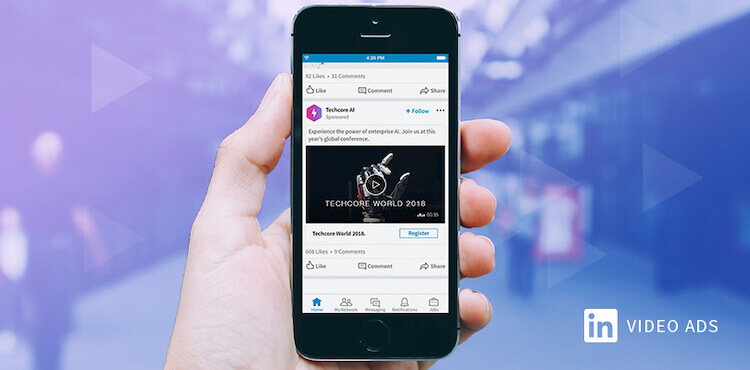

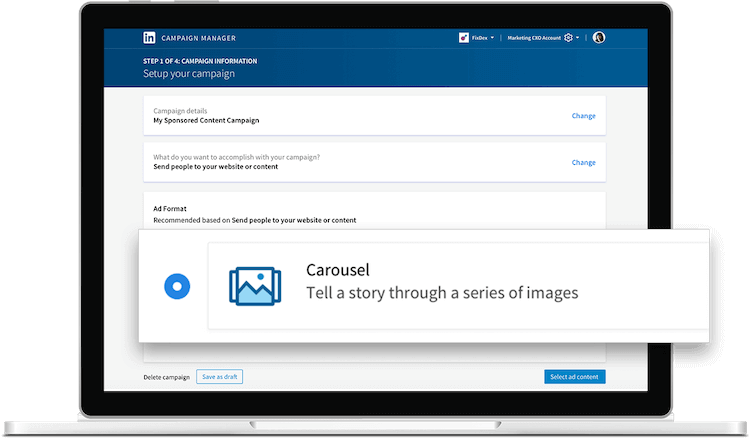
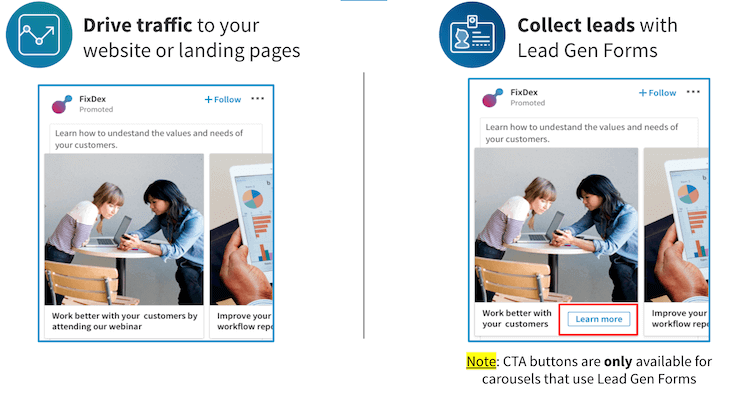
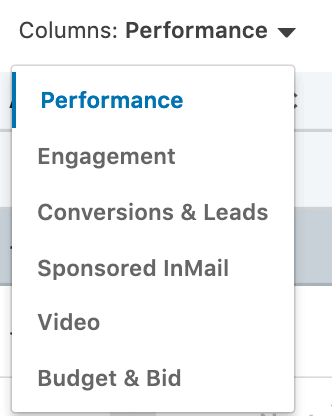
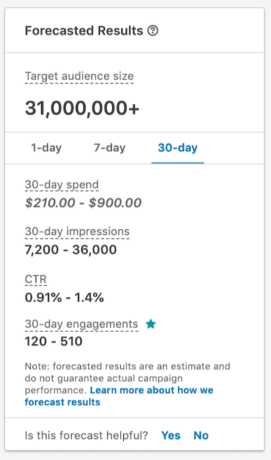
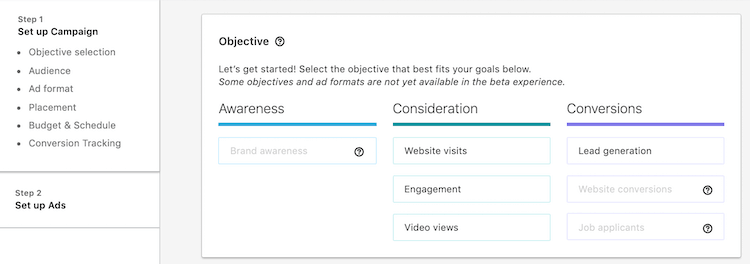

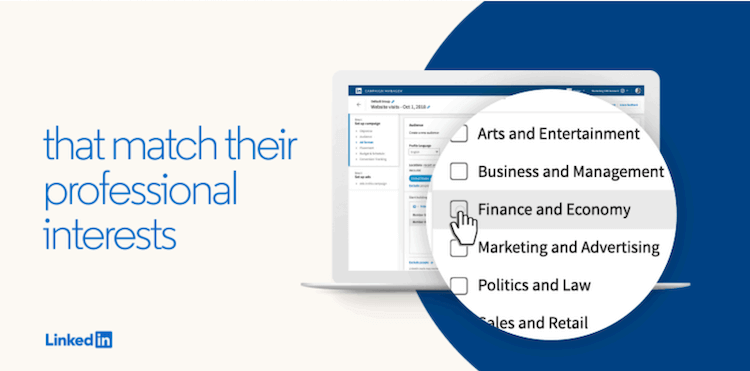
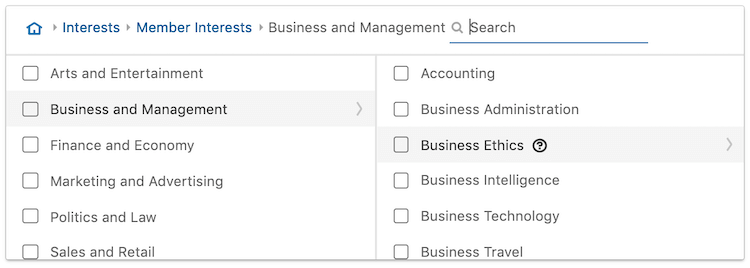
Recent Comments